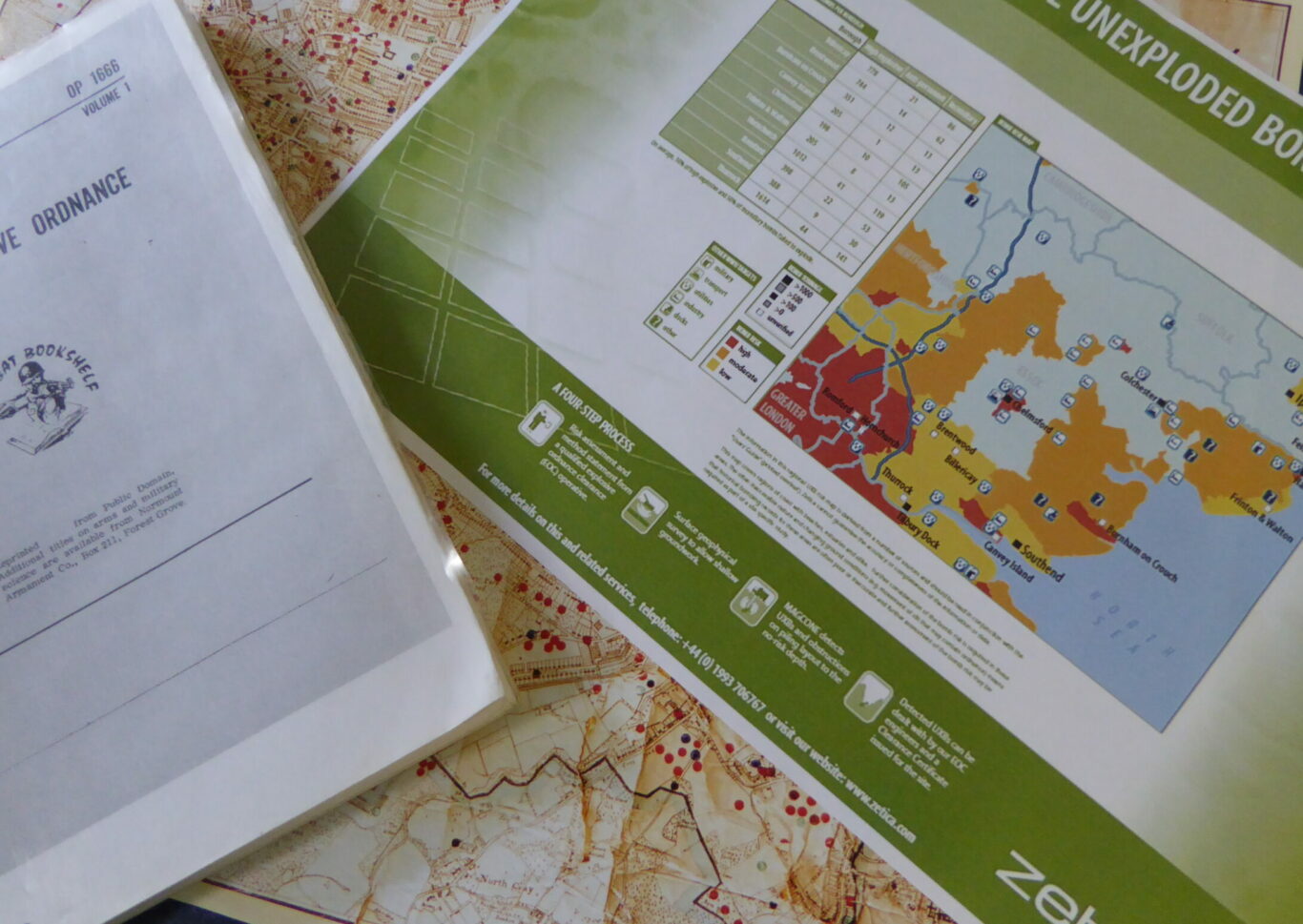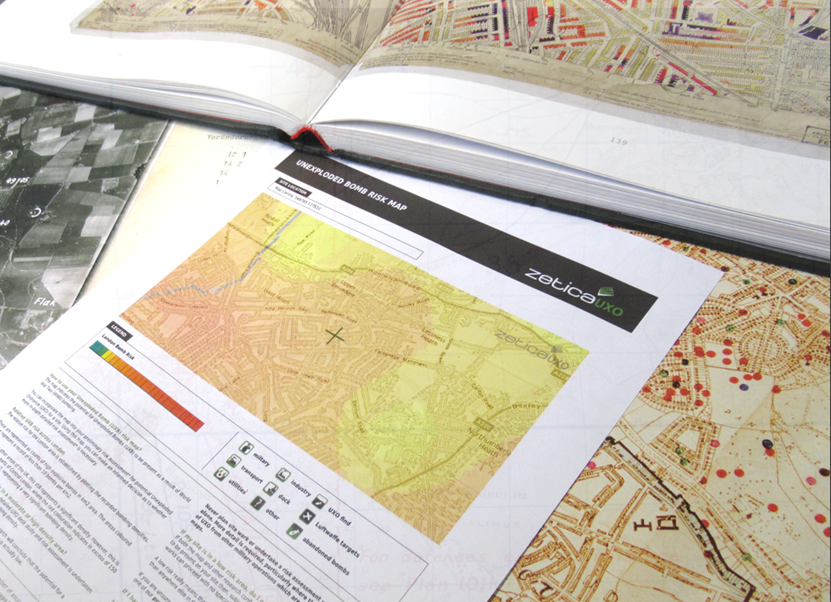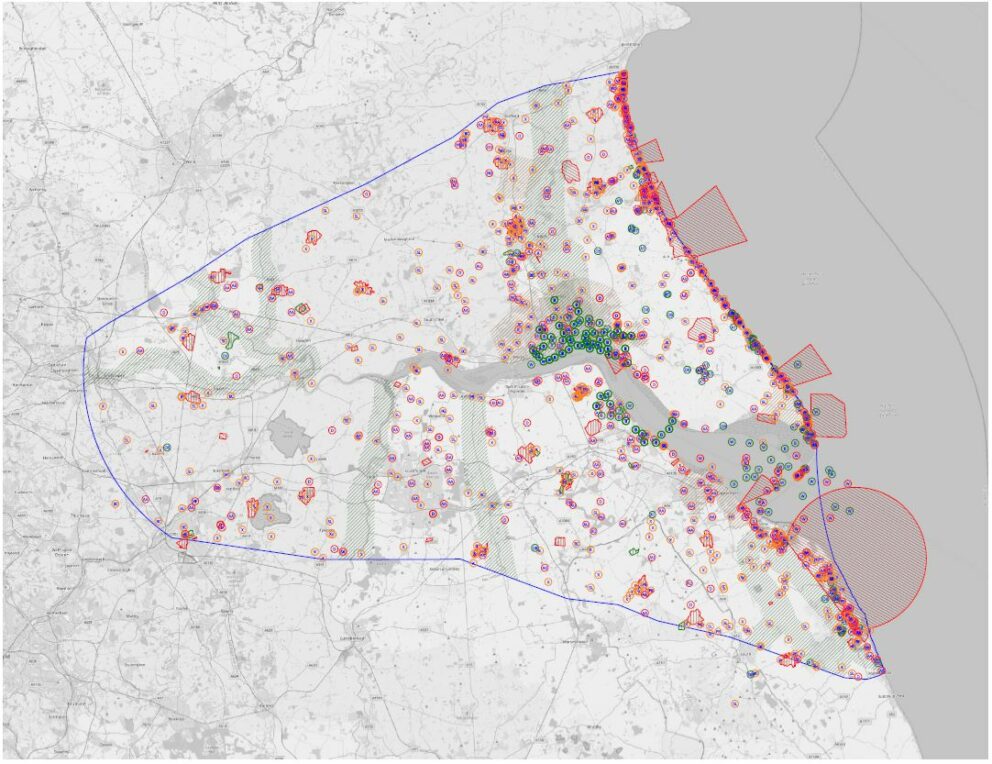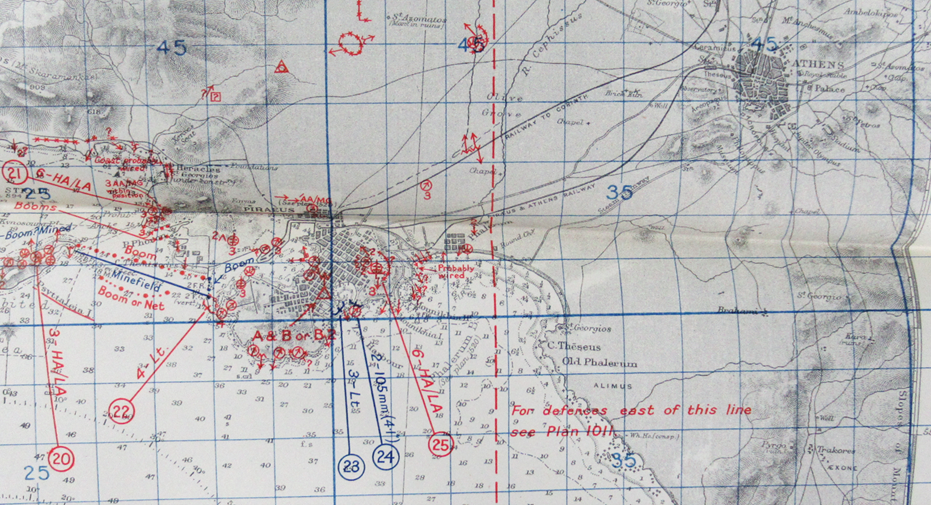ZeticaUXO provides a free Pre-Desk-Study-Assessment (PDSA) service where we review readily available records for sources of UXO in relation to your site.
Pre-Desk Study Assessment
We provide you with a brief summary report detailing what sources of UXO (if any) may be present and whether a more detailed desk-based risk assessment is required.
This free service encompasses the philosophy set out by industry guidance (CIRIA) which advocates that an initial ‘preliminary’ assessment of the UXO hazard can be made by a non-UXO specialist.
Zetica’s PDSAs can be invaluable for this purpose, particularly for more rural areas where some sources of UXO may not be as obvious. The aim of our PDSA is not to conclude the UXO risk level, but to instead advise whether further detailed research is required.
Readily available information typically includes regional bombing statistics, bomb census maps, bombing decoy lists, historical maps and other detailed records held in our database that might identify a potential source of UXO on your site.
The image on the right is an edited extract of our database.
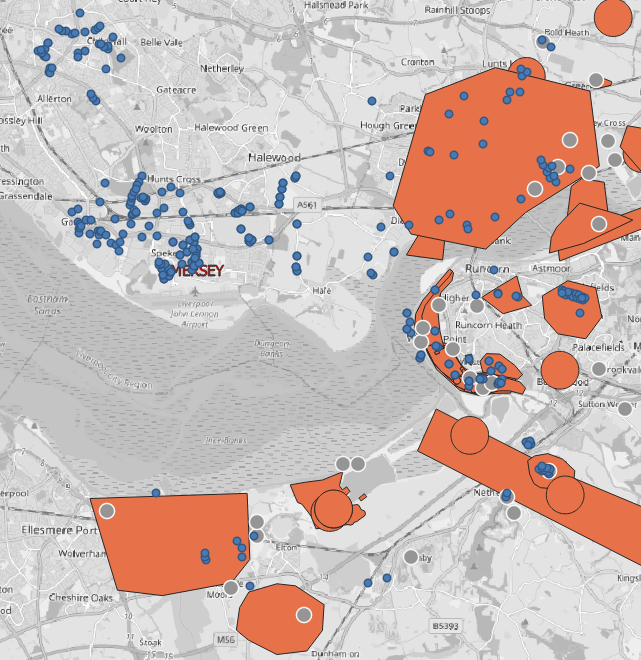
To view an example PDSA please follow the link below.
Example PDSA
A PDSA is typically provided within a few days of receiving your request. For batch requests, turnaround time may be a little longer.
Our PDSAs are provided in an easy-to-read table format sent via email. These can be incorporated into larger reports for those undertaking Phase 1 desk studies or alike.
Our vast experience, detailed database, and objective approach means that almost 70% of our PDSAs conclude that no further assessment is necessary. This saves our clients considerable amounts of time and money.
If our PDSA suggests that a potential UXO hazard exists on a site, the next step is to undertake a detailed desk study & risk assessment in order to confirm where such a hazard is likely to be present.
